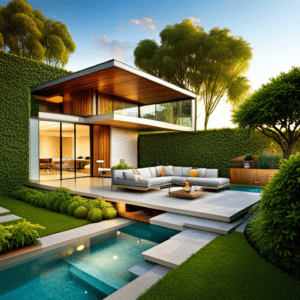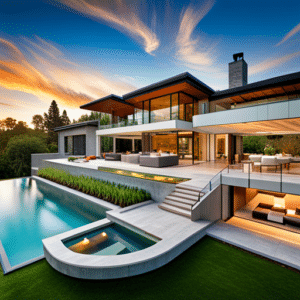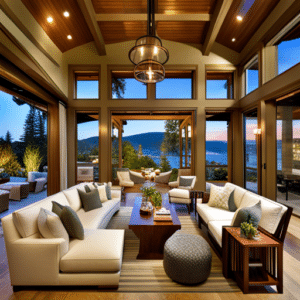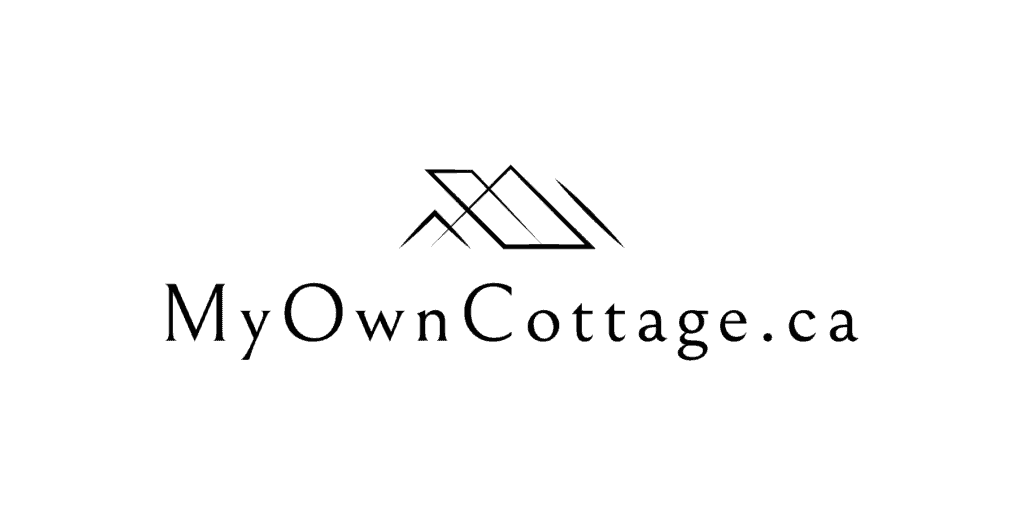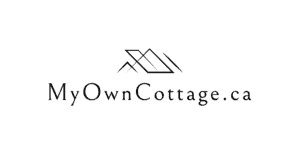Prefab Cottage vs. Prefab Permanent Home Considerations: Expert Guide
Compare prefab cottage vs. permanent prefab home considerations with insights from Ontario building experts.
Learn about costs, building codes, customization, and year-round living to make an informed decision backed by real homeowner experience.
Key Prefab Cottage vs. Prefab Permanent Home Considerations
How to Choose the Right Fit for Your Lifestyle and Budget!
Prefab cottages are typically smaller, seasonal structures designed for recreational use.
In contrast, prefab permanent homes are larger, built to year-round residential standards like Ontario Building Code and CSA A277, and offer greater insulation, customization, and long-term value.
Choosing between them depends on intended use, site zoning, and whether year-round occupancy is required.
Prefab Housing Is Rapidly Growing in Popularity
As prefab housing continues to gain momentum in today’s housing market, many homebuyers are exploring customizable, sustainable alternatives to traditional construction.
Among the most popular options are prefab cottages—ideal for weekend getaways or secondary residences—and prefab permanent homes, which offer greater square footage, year-round livability, and long-term investment value.
Importantly, practical considerations for prefab homeowners can be readily understood with careful due diligence.
When Deciding, Consider The Following
When deciding between the two, it’s critical to consider:
Total cost of ownership (not just sticker price)
Construction timelines
Intended use (short-term retreat vs. full-time living)
Location-specific factors like zoning, utility access, and climate
Available amenities and space for future expansion
🛠️ Expert Insight: According to Certified Modular Home Specialist Jane Reynolds, “Prefab permanent homes tend to offer better energy efficiency ratings and structural longevity—two major considerations for families looking to put down roots.”
Prefab cottages, by contrast, can be faster to install and easier to place in remote or scenic areas, making them popular among retirees, vacationers, and minimalist lifestyle adopters.
Key Takeaway: The best prefab option depends on your unique goals—whether you value affordability and simplicity or long-term customization and comfort. Consult with licensed builders and check local building codes before making your final decision.
As a quick depiction, our own prefab homes and prefab cottages offer budget-friendly and customizable designs, coupled with eco-friendly advantages!
Prefab Cottage vs. Prefab Permanent Home
Choosing a Prefab Cottage or a Prefab Permanent Home
In today’s real estate market—where affordability, energy efficiency, and design flexibility are top priorities—prefab homes have emerged as a powerful alternative to traditional construction.
Whether you’re dreaming of a cozy vacation home in Ontario’s lake country or planning a full-time custom home with all the comforts of modern living.
Choosing between a prefab cottage and a prefab permanent home can shape everything from your lifestyle to your long-term investment.
👉 Explore how modern prefab cottages meet — and in many cases exceed — Ontario’s building standards here: Do Prefab Cottages Qualify for Ontario’s Building Code?
How to Choose the Right Fit for Your Dream Home?
But how do you choose the perfect solution for your needs?
In this comprehensive guide, we’ll explore cost considerations, square footage, usage scenarios, and the building techniques behind prefab structures.
All this, grounded in expert advice and real homeowner experience.
🔗 Related: Learn more about modular construction and explore our full range of prefab home models here.
Understanding the Core Difference
Cottage vs. Permanent Residence
Prefab cottages and prefab permanent homes both fall under the umbrella of modular or panelized housing.
However, their purposes—and structural demands—can be quite different.
| Prefab Cottage | Prefab Permanent Home |
|---|---|
| Often designed as a vacation home, guest house, or seasonal retreat | Meant for full-time living with long-term durability |
| Smaller square footage (often under 1,000 sq/ft) | Larger layouts; 1,200+ sq/ft with multi-room floor plans |
| Easier to place in remote or seasonal locations | Requires full building code compliance and zoning |
| Faster construction & lower additional costs | More complex construction process, permits, and home model options |
🏡 Compare the structural longevity, material durability, and seasonal performance of prefab cottages versus year-round prefab homes in Ontario here: Lifespan of a Prefab Cottage vs. Permanent Prefab Home in Ontario.
Real-World Experience: What One Ontario Couple Learned
Take the story of Dan and Priya, who purchased land near Muskoka to escape the city.
Initially considering a custom cabin or tiny home, they connected with My Own Cottage, a trusted cottage builder in Ontario known for their high-quality products and exceptional service.
“We fell in love with the idea of a prefab cottage, but after reviewing the floor plans and learning how customizable the living space could be, we realized a permanent home was more in line with our goals,” Priya said.
Today, their custom design includes:
1,350 square feet
A living room flooded with natural light
A home office overlooking the forest
Energy-efficient Passive House-inspired insulation and high-performance windows
Best part? The entire process was completed in less than 6 months—no weather delays, no surprises, and peace of mind through each phase of the construction process.
🏡 Ready to Build Your Dream Cottage or Permanent Home?
Dan and Priya’s story is just one of many successful builds with My Own Cottage—a trusted prefab home builder serving Ontario with transparency, craftsmanship, and care.
Whether you’re envisioning a peaceful retreat or a full-time residence like theirs, our team brings real-world experience, high-quality materials, and a customer-first approach to every project.
✅ Custom floor plans tailored to your lifestyle
✅ Energy-efficient, code-compliant construction
✅ Fast, weather-resistant factory build process
✅ Full support from permit to move-in
💬 Let’s talk about your vision.
Get a free consultation with our prefab experts today.
Cost and Square Footage Considerations
Whether you’re comparing a 600 sq/ft tiny home or a 2,000 sq/ft custom home, it’s crucial to evaluate cost on more than just the surface level.
Key Factors to Consider:
Base price per square foot (varies by region and home type)
Site prep and foundation (permanent homes may require deeper foundations)
Building code compliance and inspection fees
Customizations like cabinetry, fixtures, entry doors, and dining room layout
Transportation and weather condition-related logistics (a controlled environment is a huge advantage of prefab)
✅ Tip: Ask your builder for a breakdown of additional costs upfront to avoid budget surprises.
Also, learn how prefab cottage owners can legally expand their homes over time in Ontario here: Can You Add Onto a Prefab Cottage Later in Ontario?
Energy Efficiency and Building Techniques
One of the strongest arguments for going prefab is superior energy efficiency.
Built in a controlled environment, both cottages and permanent prefab homes often outperform traditional homes in thermal retention and environmental impact.
At My Own Cottage, for example, each structure is designed with:
High-performance windows and insulation
Precision-fit panels and airtight seals
Customizable building plans that follow or exceed Ontario’s building codes
Whether you’re planning a minimalist cottage in Ontario or a larger dream home, prefab construction gives you the best price-to-performance ratio with minimal construction delays.
When a Cottage Makes Sense
If you’re planning a vacation home or need a guest house for seasonal use, a prefab cottage is likely your best fit.
Benefits include:
Lower upfront investment
Quicker installation—especially in rural zones
The charm of a unique structure tailored to your personal style
🔎 Further reading: Can I Use a Prefab Cottage as a Short-Term Rental in Ontario?
When to Choose a Permanent Home
If you’re planning to live year-round or rent your home as a long-term investment, a modular home designed as a full-time residence makes more sense.
Look for:
Durable materials rated for year-round climate challenges
Full customization, from outdoor space design to multi-bathroom layouts
Future-proofing options like solar integration, EV charging stations, or office pods
🔍 Pro Tip: Check with local authorities to confirm zoning restrictions and real estate designations for full-time dwellings.
Final Thoughts: Match Your Lifestyle to Your Layout
The prefab housing industry is no longer just about affordability—it’s about customization, sustainability, and quality.
Whether you’re looking for a seasonal retreat or a forever home, prefab solutions can provide the perfect home in the right place, faster and often more affordably than traditional construction.
Your Next Steps:
💬 Book a free design consultation with My Own Cottage
🏡 Browse our most popular custom home models
🔗 Learn more in our Prefab Home Buyer’s Guide
❓ FAQ About Prefab Cottage vs. Prefab Permanent Home Considerations
Which is better: modular or prefabricated homes?
Modular homes are a type of prefabricated home, but they offer better structural integrity, faster assembly, and often higher resale value due to being built to full residential building codes. For long-term living, modular is typically the better choice.
What are the disadvantages of prefabricated homes?
Disadvantages include limited customization, potential financing hurdles, transportation logistics, and the need for proper site prep. Some prefab models may not meet full residential standards unless built modular.
Why aren’t prefab homes more popular?
Prefab homes have faced stigma around quality and financing. However, modern prefab homes now offer high-quality materials, energy efficiency, and faster build times—making them increasingly appealing to today’s homebuyers.
What’s the difference between prefab cottages and prefab permanent homes?
Prefab cottages are smaller, seasonal homes ideal for vacation use, while prefab permanent homes are larger, customizable, and built for year-round living. The main differences are in insulation, square footage, and code compliance.
How much do prefab cottages cost compared to permanent prefab homes?
Prefab cottages typically cost $100,000–$200,000, while prefab permanent homes range from $200,000–$400,000+, depending on size, customization, and site prep. Cost per square foot is lower than traditional builds in both cases.
Is prefab cheaper than traditional construction?
Yes. Prefab homes can cost 10–25% less than traditional construction due to reduced labor, minimal material waste, and controlled factory environments—resulting in fewer delays and lower overhead.
Can I put a modular home on my property in Ontario?
Yes, modular homes are allowed in Ontario, but you must check local zoning bylaws, permits, and utility access before installation. Some areas may restrict seasonal vs. permanent use.
What is the resale value of modular homes vs. stick-built homes?
Modern modular homes often retain comparable resale value to stick-built homes, especially when built to code and well-maintained. Prefab cottages may have lower resale unless located in desirable vacation areas.
Are prefab cottages suitable for year-round living?
Not all prefab cottages are designed for winter use. To live year-round, choose a model with full insulation, energy-efficient windows, and compliance with local residential codes.
What permits are needed to build a prefab home in Ontario?
You’ll need a building permit, zoning approval, and utility connection permits. Consult your municipality’s planning department for exact requirements based on your lot and prefab type.
Can I finance a prefab or modular home in Canada?
Yes. Many Canadian lenders offer construction or chattel loans for prefab homes. Modular homes often qualify for traditional mortgages if they meet permanent foundation and code requirements.
